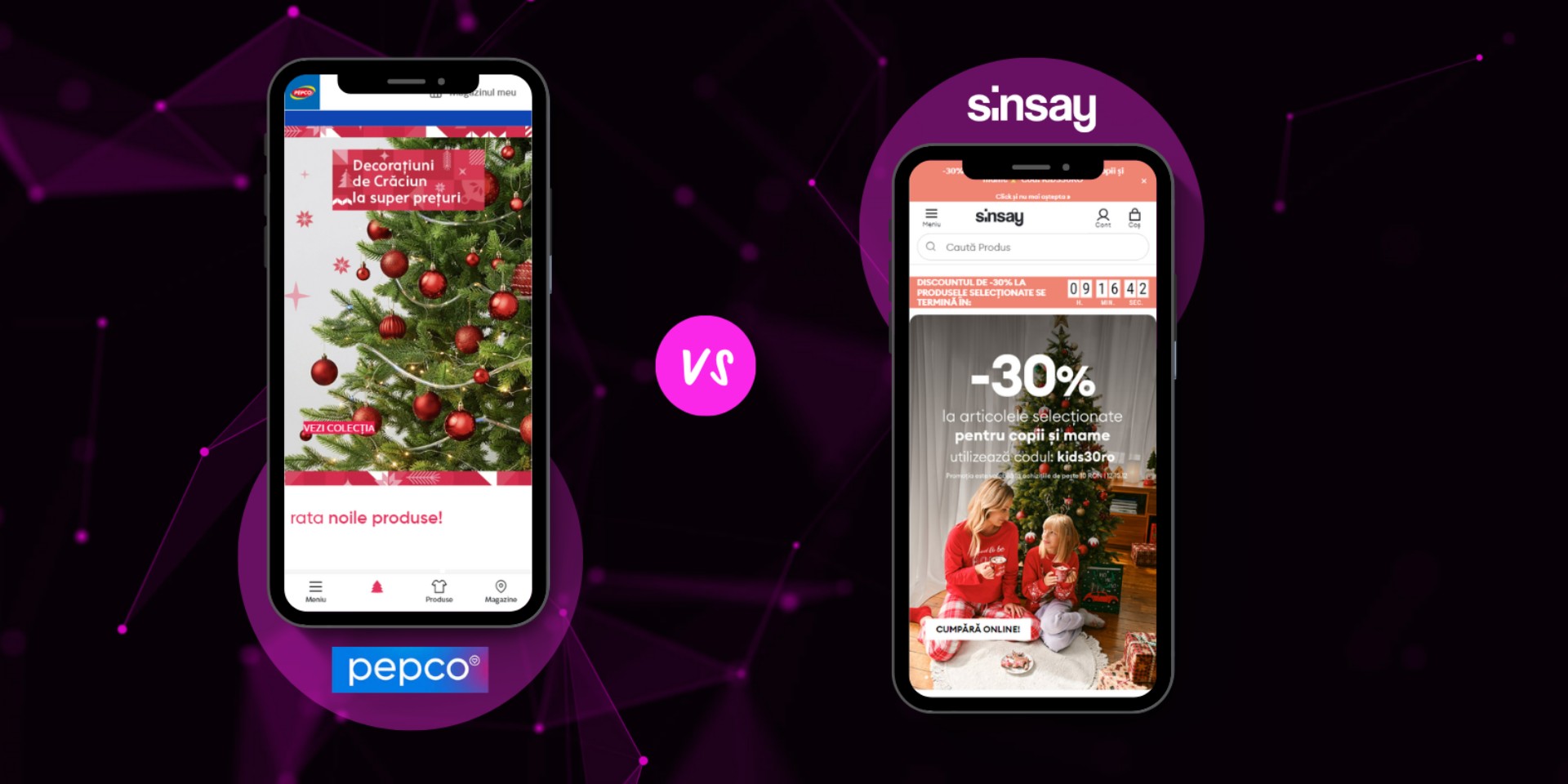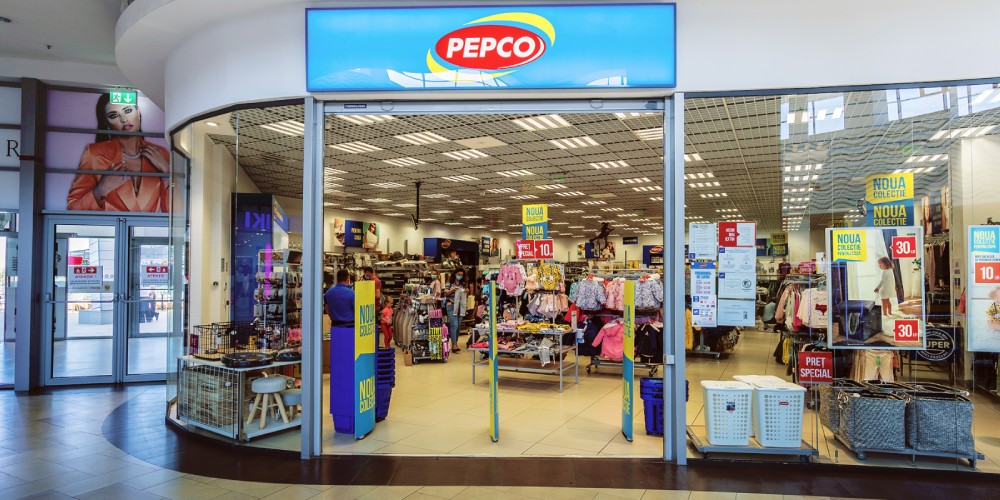
A COMPARATIVE ANALYSIS OF PEPCO & SINSAY
Is The Online Channel An (Yet) Untapped Opportunity For Pepco?
In recent years, the Romanian fashion market has become an important destination for most Polish retailers. Although it is a small market, it has great potential for the online area. Romanians, even with little purchasing power, are passionate about fashion and willing to allocate a greater share of their income to this segment.
According to a study by MKOR, the fashion market recovered slightly in 2022 (3%) after the decrease recorded during the pandemic. Regarding the preference for online and offline shopping, 2 out of 10 Romanian customers buy fashion items online, allocating monthly budgets 12% higher. Consumers are searching for value for money in the online environment and the in-store atmosphere in the offline environment. Shopping experience and discounts are important regardless of the environment.
Starting with the “battle” that takes place between online and offline but also with how the fashion market developed in the last year and the divided preferences of consumers for the two channels, we chose as the source of this analysis two retailers that have expanded a lot in recent years: PEPCO and Sinsay. So, we analyzed:
🚀 their evolution in the Romanian market from the first store until now;
🚀 who their target audience is;
🚀 their offline and online presences;
🚀 and, last but not least, we compared the business strategies adopted by them.
Headquartered in Poznan, Poland, Pepco has over 25,000 employees and over 2,900 stores opened in 16 European countries, with its most important presence in Poland, Romania, Hungary, and the Czech Republic.

Active in the Romanian market since 2014, Pepco opens an average of 50 stores annually, exceeding 400 stores in 2022. These are present in both large and small cities, located predominantly in commercial spaces, but also street spaces, located on the ground floor, with a large influx of passers-by. The retailer opened its first stores in Bucharest, Alba Iulia, Deva, Media, Brăila, Buzău, Slobozia, Câmpina, Ploiești, and Târgu Jiu.
In 2021, Pepco generated a total turnover of 2166 million Euros, and in Romania – a turnover of 1.9 billion lei, 36% more than in 2020. According to Pepco Group Financial Reports and Presentations, the Home&Deco segment represents 44% of this. Thus, Pepco, along with brands such as English Home, H&M Home, Zara Home, and recently Sinsay, is a destination for lovers of Home&Deco products.
While Pepco wants to attract customers between the ages of 25 and 50, especially mothers, careful about the budget allocated to shopping, Sinsay’s products are dedicated to teenage girls, but also young women, men, and families with children.
Like Pepco, Sinsay entered the local market in 2014 when it opened its first store in Ploiesti, and currently, there are 56 stores in Romania. According to their website, they have expansion plans for the next year, having planned to open five more stores in Onesti, Timisoara, Calarasi, Satu-Mare, and Ploiesti.
Part of the LPP group, Sinsay has been present in the European market for ten years. In numbers, this means 523 stores in 18 countries in Europe, 550,000 square meters of commercial space, 16 countries where they have an online presence, and 18 million online transactions in 2021 alone.

Sinsay ended 2021 with a global turnover of more than 900 million euros and recorded an increase of 164% compared to the previous year. In Romania, it generated a turnover of over 187 million euros.
What differentiates the business models of the two retailers?
Having a clear focus on a business model based on discounts, Pepco chose from the beginning to go offline by opening many stores. With a wide range of products and prices as low as possible, Pepco’s mission is to be accessible to the customer and thus cover the need for online shopping.
Attentive to the present changes and challenges, Sinsay developed its strategy based on an omnichannel business model by fully integrating both online and offline. Its goal is to expand both channels simultaneously and constantly adapt them to the needs and expectations of its customers.
Both two retailers are very similar in terms of the categories of products sold but also the price policy. What differentiates them in the first place is the existence of an online store and a mobile application that reflects the adopted business model very well.
Along with providing the customer with a much better shopping experience, the brand can display many more offers, available only online. And, what’s more important, it is a responsive, complete, and easy-to-navigate site, and its users have “at hand” all the information they need.
A presentation site ensures the online presence of Pepco, which does not have an eCommerce module. Thus, customers can view Pepco’s products and offers but cannot place orders. The retailer applies this strategy in all countries where the brand is present.
Although both brands are very successful in Romania, even during the pandemic when Pepco had to close its stores, we cannot help but wonder if the absence of an online store is not a lost opportunity for it.
Summing up, at a time when more and more brands are moving online and developing strategies that will help them reach as many customers as possible, and the latter want purchases to be as quick and comfortable as possible, Pepco chooses to go in the opposite direction. It is calling its customers to it by promising access to the products they need, at the lowest prices and as close to their homes as possible.
A side-by-side comparison of the two retailers
|
|
PEPCO |
SINSAY |
|
Country of origin |
Poland |
Poland |
|
International presence |
Czech Republic, Austria, Slovenia, Italy, Croatia, Serbia, Hungary, Bulgaria, Spain, Slovakia, Germany, Estonia, Lithuania, Latvia |
Bulgaria, Czech Republic, Germany, Estonia, Spain, Greece, Croatia, Italy, Lithuania, Latvia, Hungary, Slovenia, Slovakia, Ukraine, Serbia |
|
Presence in Romania |
Since 2014 |
Since 2014 |
|
First shop |
București, Alba Iulia, Deva, Media, Brăila, Buzău, Slobozia, Câmpina, Ploiești și Târgu Jiu |
Ploiești |
|
Main cities in Romania |
București, Iași, Sibiu, Pitești, Baia Mare, Suceava, Cluj, Constanța |
București, Ploiești, Timișoara |
|
Active on |
Discount market |
Mass market fashion |
|
Business Model
|
Discount oriented. Many shops, accessible in different cities. A wide range of products. |
Omnichannel Increased customer accessibility to the brand’s offerss by continuously developing offline and online channels so that customers can interact with it at all times. |
|
Target Audience |
Clients between 25-50 years, especially mothers, careful with their budget allocated to shopping. |
Adolescent girls, young women, men, families with children.i |
|
Offline Presence |
Over 400 shops, located strategically in small and medium-sized cities. |
56 shops |
|
Online Presence |
Yes, through a presentation site of the brand, products and prices. |
Yes, through – online shop – mobile app |
|
Platform |
WordPress |
Magento |
|
Website |
||
|
Categories |
Items for: – women – men – children – home – pets |
Items for: – kids – women – men – home
|
|
Number of Employees |
over 2800 |
over 1000 |
An analysis powered by Digital Kitchen!



